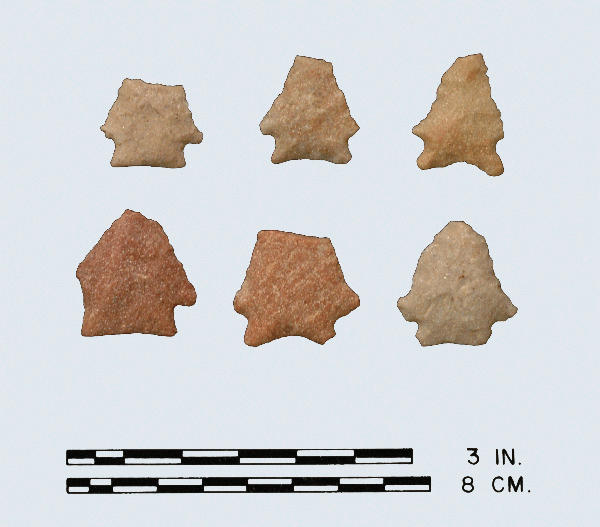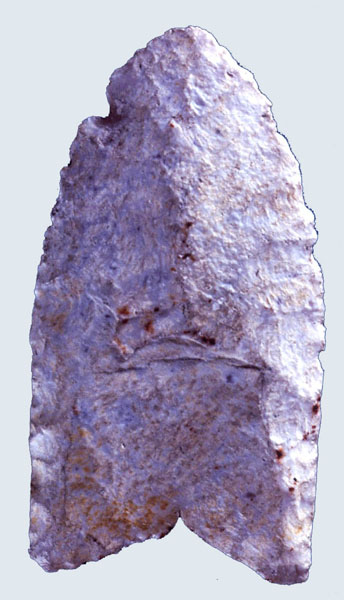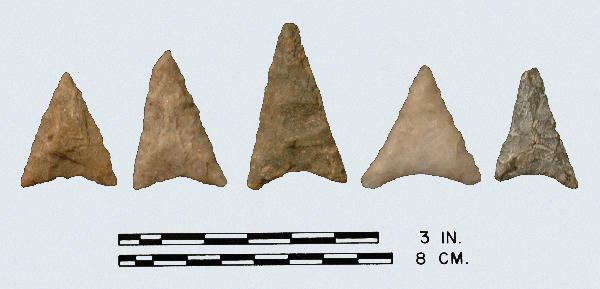
Decatur: Top Row: all quartzite; Bottom Row: all quartzite.
Type Corner Notched Early-Archaic
Defining Attributes
The Decatur is a small to medium corner notched point with a straight or concave base, and a straight or incurvate blade which has an alternate beveled edge. Decatur points are very thin with a parallel or rhomboid cross section.
Chronology
The Decatur point dates to the Early Archaic period, 7200 to 7000 BCE. At the Cactus Hill Site (44SX202) in Sussex County, Virginia, McAvoy (1997) obtained a carbon date of 7190 +/- 50 BCE.
Description
- Blade: The straight or incurvate blade is serrated with an alternate edge blade bevel. The blade bevel may be either left or right, but is more frequently observed on the left with the tip upward. The shoulders are often barbed as a result of re-sharpening and the barbs may slope toward the base, tip or extend straight out from the blade.
- Base: The base may be straight or concave. The basal margins and corner notches are heavily ground.
- Size: Length ranges from 22 to 57 mm. Width ranges from 18 to 32 mm. Thickness ranges from 3 to 6 mm.
- Technique of manufacture: Pressure flaking; the blade was serrated and the base was ground.
Discussion
Cambron first described the type from sites near Decatur, Alabama. Decatur is sometimes called Angelico in Virginia, which Painter (1964) named for Angelico Creek in Southampton County. Upon the Nottoway, Decatur points are most frequently made of fine grain quartzite, silicified rhyolite, silicified slate and quartz. Some examples of the Decatur blend into, and derive from, the earlier Palmer Corner Notched type.
Defined in Literature
Decatur points were first described by Cambron from sites near Decatur, Alabama. Painter called this type Angelico in Virginia.
References




